The medical system is a mess. No matter where you are in the world, chances are good that you can agree with this statement. Health care is expensive, wait times are extensive, and the situation worsens with each passing day. The system that is supposed to keep us healthy is severely broken, and there is no solution in sight. Luckily, there are alternative options out there that are readily available to you regardless of the state of the healthcare system or the global climate. In fact, there are natural options for almost every possible ailment, and understanding these options is crucial to living a prepared lifestyle. One such option that is often overlooked, ignored, or misunderstood is Yarrow. If there is a plant to grow in your garden, it is this one.
Related: 9 Natural Remedies that People with Diabetes Will Find Useful
What Is Yarrow – The Plant to Grow in Your Garden
Yarrow (Achillea Millefolium) is a plant that grows all over the globe in almost every country and climate. It has been used to create medicines for centuries and has numerous health benefits.
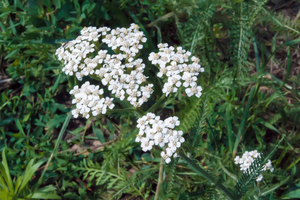
Yarrow is a herbaceous flowering perennial plant that is part of the sunflower family and closely related to chamomile and chrysanthemum.
Yarrow has been used in traditional medicine since ancient times. Today, this plants is vastly underutilized, despite its impressive benefits.
The best part is that it is effortless to grow and will flourish almost anywhere.
Other Names For Yarrow
Yarrow is quite common and has many names.
It is also commonly known as achillea, bloodwort, carpenter’s weed, devil’s nettle, nosebleed, old man’s pepper, staunch weed, thousand-leaf, woundwort, and many more.
The plant is also referred to as a plumajillo, the Spanish word for “little feather,” because of its leaf shape and texture.
Where Does Yarrow Grow?
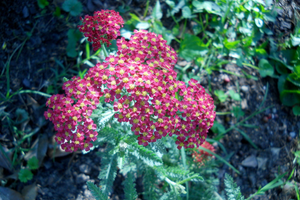
Yarrow grows throughout the world in various countries and climates and is often found along tree lines or in fields and overgrown yards.
While Yarrow comes in various colors, it is most commonly seen in white. Yarrow is one of the easiest plants to grow and requires little care or attention.
Yarrow is considered a no-fuss, foolproof herb that fits nicely into any garden.
Related: 15 Best Herbs for Your Prepper Garden
Allow Yarrow to grow to maturity when the flowers are fully open and cut it off at the bottom of the stem with the head still attached to harvest. Hang the harvested plant upside down to dry for several days before use.
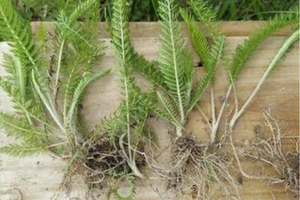
Every part of the Yarrow plant has a medicinal purpose. You can also store Yarrow in an airtight container for up to a year.
If you wish to use the root of the Yarrow plant, you should ensure that it is at least two to three years old. The root must be dried for a week before use.
However, you can harvest small pieces of the root over time, leaving the remaining plant intact to grow again.
How To Identify Yarrow
Yarrow is not difficult to identify, and its distinctive scent is a good indicator that can help you avoid mistakes. It has a strong, sweet smell that is similar to chrysanthemums.
Yarrow also has a bitter taste that is equally as strong as its scent. These plants can reach more than 3 feet high at maturity but generally stay between 1 and 3 feet.
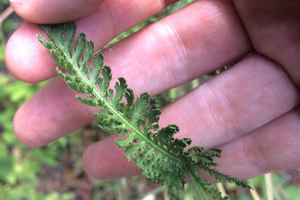 • Yarrow Leaves: The leaves resemble a feather and are evenly distributed on the stem. They are relatively small in size.
• Yarrow Leaves: The leaves resemble a feather and are evenly distributed on the stem. They are relatively small in size.
• The Stem: The stem is ridged and angular. Fibrous in texture, the stem easily holds the hairy leaves and small fruits and flowers that adorn it.
• The Flowers: Yarrow blooms are composite and can be seen from the start of summer into the early fall. Individual Yarrow blooms consist of between 15 and 40 small, round, white or pale pink flowers with bright yellow centers.
Related: Identifying Your Backyard Pharmacy
• Yarrow Fruits: The Yarrow plant is adorned with small fruits that contain a seed. Growing to around 2mm, the fruits of the Yarrow are long, narrow, and oblong.
Copy-Cats:
Like many plants, there are look-a-likes, and you must be aware of the differences.
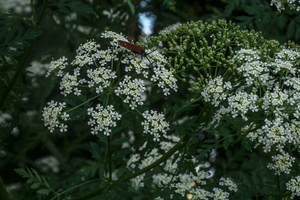 One such plant that resembles Yarrow is Poison Hemlock. Poison Hemlock is highly toxic and is not edible.
One such plant that resembles Yarrow is Poison Hemlock. Poison Hemlock is highly toxic and is not edible.
Consuming any part of this plant is extremely dangerous. However, aside from fragrance, one main difference between Poison Hemlock and Yarrow is the leaf shape.
The leaves of Poison Hemlock are more triangular than Yarrow leaves. Hemlock also tends to have a thick stalk with purple spots.
Queen Anne’s Lace is similar to Yarrow but is typically a bit larger, though not always. The main differences between the two plants are the stems and flowers.
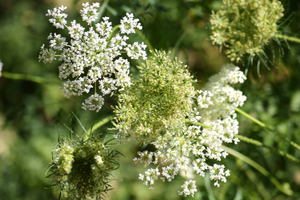 Queen Anne’s Lace has a hairy stem and flowers lacking a distinct yellow center. Instead, Queen Anne’s Lace can be found with red or purple blooms in the center of each head.
Queen Anne’s Lace has a hairy stem and flowers lacking a distinct yellow center. Instead, Queen Anne’s Lace can be found with red or purple blooms in the center of each head.
Unlike the Yarrow plant, Queen Anne’s Lace tends to smell more like a carrot that has been crushed.
Lastly, Sweet Fennel is sometimes mistaken for Yarrow. While edible and relatively safe, this plant will not help your health issues.
Spotting the differences between these two plants can be more challenging if you are not aware of what to look for, but the stem of Sweet Fennel will be slightly grooved, and the flowers will be flat-topped with yellow heads.
Sweet Fennel has a licorice smell that differs from the distinct smell of Yarrow as well.
The Many Medicinal Uses Of Yarrow
Yarrow can be used in many ways, from teas to tinctures; it is an excellent tool for treating many common ailments.
Some medicinal uses of Yarrow include:
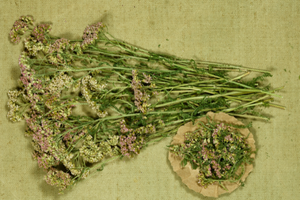 • It is used to treat wounds
• It is used to treat wounds
• It helps to stop bleeding
• It can be used as a digestive herb
• It is an anti-inflammatory
• It is anti-spasmodic
• It reduces fever
• It can help ease rheumatic pain
• It lowers blood pressure
• It is antimicrobial
Often referred to as the “ultimate prepper herb,” Yarrow has been a crucial medical tool for centuries and has even been used to treat soldiers’ wounds in battle.
Using Yarrow As A Health Aid:
The Yarrow plant is packed full of beneficial active ingredients.
Compounds including Asparagine, Achilleine, Archilletin, Bitters, Calcium Salts, Potassium, Flavonoids, Isovaleric Acid, Salicylic Acid, and Sterols exist within the Yarrow plant and provide numerous health benefits.
Get Your Own Yarrow Seeds, Last 30 Packs Left!
Yarrow has astringent, antiseptic, antibacterial, anti-inflammatory, anti-spasmodic, coagulant, blood thinning, diaphoretic, and hypotensive abilities.
The list of things this plant can do is impressive, and the true power of this natural miracle remains unknown. However, there are many established uses for Yarrow, which we explore in the table below.
Preparation and Treatment Research:
The preparation of Yarrow depends on the ailment you are looking to treat and its specific symptoms.
Although there is a plethora of anecdotal evidence available, like many natural remedies, there is a significant lack of clinical studies on the effectiveness of Yarrow in disease treatment.
How To Make Yarrow Teas and Tinctures:
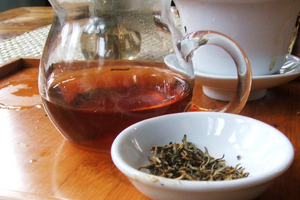 Yarrow tea is the most common form of consumption.
Yarrow tea is the most common form of consumption.
All parts of the Yarrow plant are consumable, from the leaves and stem to the flowers and roots.
However, most remedies rely on the leaves and flowers to create medicines.
Note: Most remedies that utilize Yarrow require it to be in powdered form. Using a mortar and pestle or a blender can create Yarrow powder, or it can be purchased online.
Yarrow Tea
Yarrow Tea is straightforward to make. Creating Yarrow tea is as simple as mixing one heaping tablespoon of the herb into a cup of boiling water.
However, since the taste is quite bitter, you may want to add honey or another herb to the mixture to make it more palatable.
On the other hand, creating a tincture requires more effort and some added patience.
While the process itself is quick, the time it takes for the mixture to form is not as speedy.
Simple Yarrow Tincture:
Creating a Yarrow Tincture is almost as easy as making Yarrow tea. However, the creation of this medicine takes time and patience.
Ingredients:
- 3 ½ tablespoons of dried Yarrow chopped into a fine powder.
- 10 tablespoons of alcohol > 80% proof, such as vodka.
Steps:
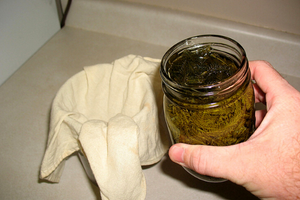 Place the Yarrow in a glass jar.
Place the Yarrow in a glass jar.- Pour alcohol over the herb and stir.
- Cover with an airtight lid.
- Store the jar in a cool, dark place.
- After 8 weeks, strain the liquid from the mixture into an appropriate glass container or eyedropper jar.
Related: How To Make A Pain-Relieving Willow Bark Tincture
The use of the alcohol allows this tincture to be safely stored for 1 to 1 ½ years. Any change in aroma will indicate that it is time to throw it away.
Dosage:
The preparation of Yarrow depends on numerous factors. Age, general health, underlying conditions, current medications, the type of condition you are looking to treat, and how you plan to use the product all play a role in dosage.
The following guidelines may help with dosing Yarrow for medicinal use. 1-3 cups of Yarrow Tea will be safe for most people to consume daily.
The tincture described above can be added to water 1-3 times a day with little risk. Dosage for Yarrow Tincture consists of 20-40 drops daily.
Note: As with any treatment, it is suggested that you speak with your healthcare provider before you begin using Yarrow to treat any ailment to avoid conflicts or complications.
Storing and Preserving Yarrow:
Yarrow is best preserved by drying the plant, which helps to retain its medicinal properties and extend shelf life.
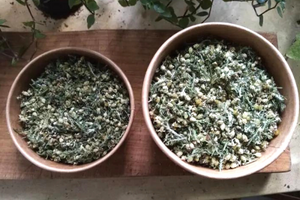 Spread the leaves and flowers in a thin layer on a drying screen.
Spread the leaves and flowers in a thin layer on a drying screen.- Place the screen with the Yarow in a well-ventilated area that is well-shaded.
- Turn, flip, and move the flowers regularly to encourage even drying and prevent mold growth.
- Once the leaves and flowers are sufficiently dry and crisp to touch, place them in a clearly labeled airtight container, and store them in a dry, dark place.
Note: Do not wash or rinse the flowers before drying, as this can impact the medicinal properties and cause mild growth. If the Yarrow shows signs of mold or mildew, it must be thrown away immediately.
Common Combinations:
Blessed Thistle can be combined with Yarrow to aid digestion, and sage will help strengthen the liver and support the function of the stomach. Combining the two as a digestive bitter will increase bile flow.
Mixing Peppermint with Yarrow creates a diaphoretic for treating colds and flu. Peppermint also neutralizes Yarrow and gives it a more pleasant taste.
Another way to utilize Yarrow in cold and flu is by adding Elderberries. This combination is excellent for treating colds and flu and can also be used as a blood tonic to treat anemia or poor circulation.
Alternatively, Olive leaves can be mixed with Yarrow to create a general tonic that improves circulation and immunity.
Other Medicinal Plants To Consider:
While Yarrow is exceptional in its abilities, there is no ‘cure-all’ plant out there. Literally thousands of medicinal plants can be grown for therapeutic use.
Cilantro or coriander, for example, have some exceptional health benefits. Tumeric is also well-known for its healing properties and ability to treat inflammation.
Of course there is always Aloe Vera, Valerian, Lavender, and Peppermint as well. You may also want to consider herbs like rosemary, or plants like the dandelion, or perhaps you may want to look into St. John’s Wort.
All of these options provide a variety of health benefits for various conditions and can provide relief during desperate times.
You may also like:
 The 5 Best Pocket Handguns For Self-Defence
The 5 Best Pocket Handguns For Self-Defence
Why You Should Chew Yarrow (Video)
The Best Fowls to Raise for SHTF – Quail, Guineafowl, Chicken, Turkey, Emu, etc.
America’s Vulnerability When it Comes to Internal Crises: US Now vs. US Then

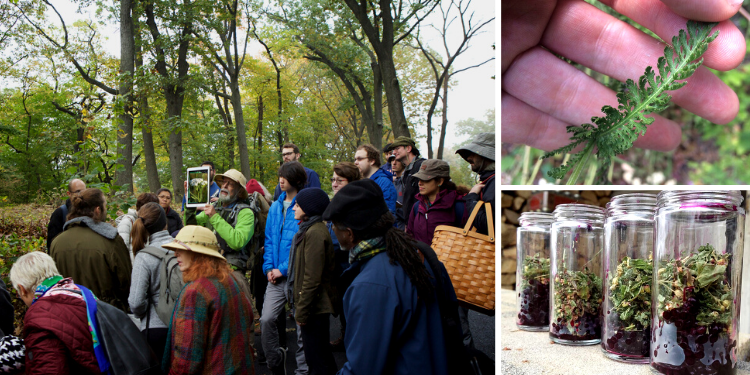













A smart article that focuses on ONE Herbal plant. Not complete but a very good start 🙂
I’d love information on how to get yarrow to seed and seed preservation, growing data. A good herbalist grows their own as so to better control the quality of the herbs.
Thanks for posting
I found yarrow and many other important plant seeds on ebay last year.
Yarrow grows like a weed. Shoots are spread underground from the main plants and show up everywhere. Its invasive, be careful.
Plant it in pots or a planter, as you would do with mint.
Here in the South it’s everywhere! Glad to read this article.
Thanks,very informative.
Yarrow can be very invasive, so consider planting seeds in a container.
And in a screened in area for the seed will scatter
Yarrow was one of the first medicinals I learned as a child. I was taught to use it both as a fresh tea and in dried form. It is super easy to recognize the distinct feathery leaves. Domesticated yarrow grows larger and more colorful flowers but but is still good medicinally. Golden yarrow is often sold as a garden flower. It is not as delicate and feathery but is,a long lived plant in a flower bed. I still prefer the wild, creamy white blooming form the most.
THE OTHER PLANT O RECOMMEND IS WILD LETTUCE EXTRACT GREAT FOR PAIN
LOL, just cut a bunch of that down, growing everywhere. Already harvested a bunch, a while back… Yes, good for pain.
Looking to getting some yarrow started. Good stuff…
Good article and look forward to growing the weed.
Oregano eye drops will cure headaches and back pain
Here in high mountain I n desert country Yarrow does exist but its rare in the wild. I’m going to try growing it from seed.
I’m looking for Western Yarrow seed. If you find some let me know! niio
I’ll do that Red. I’ve seen some growing at a rest home in Grant’s in the lawn. It has a commercial care company. About the time it starts to bloom they mow again. I’m trying to watch along sidewalks or flowerbeds. The drought has pretty well killed it in other places.
you might try cutting out a couple small “plugs” that contains the yarrow, then plant them in a pot when you get home. I did that with two kinds of ice plant growing next to streets and a parking lot and they did great.